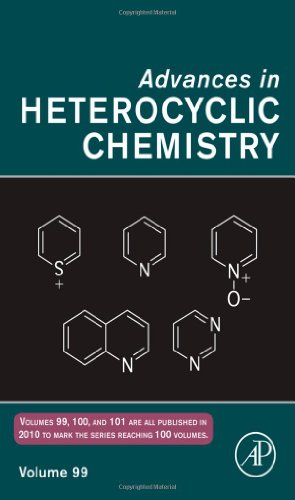

Most ebook files are in PDF format, so you can easily read them using various software such as Foxit Reader or directly on the Google Chrome browser.
Some ebook files are released by publishers in other formats such as .awz, .mobi, .epub, .fb2, etc. You may need to install specific software to read these formats on mobile/PC, such as Calibre.
Please read the tutorial at this link. https://ebooknice.com/page/post?id=faq
We offer FREE conversion to the popular formats you request; however, this may take some time. Therefore, right after payment, please email us, and we will try to provide the service as quickly as possible.
For some exceptional file formats or broken links (if any), please refrain from opening any disputes. Instead, email us first, and we will try to assist within a maximum of 6 hours.
EbookNice Team

Status:
Available4.8
33 reviews
ISBN 10: 0123809347
ISBN 13: 9780123809346
Author: Alan R Katritzky
Chapter 1. Cycloaddition and Cyclization Chemistry of 2H-Azirines
1. Introduction
2. Photocycloaddition Reactions of 2H-Azirines
3. Thermal Cyclizations of 2H-Azirines
4. 2H-Azirines as Dienophiles or Dipolarophiles in Cycloaddition Reactions
5. Concluding Remarks
Acknowledgment
References
Chapter 2. Heterocyclic BINAP Analogues
1. Introduction
2. Development of Synthetic Routes from BINAP to Heterocyclic BINAP Analogues
3. Ligands with Phosphine Groups Attached to the Heterocyclic Ring
4. Ligands with Phosphine Groups Attached to the Non-Heterocyclic Ring
Acknowledgment
References
Chapter 3. Monocyclic Hetarenes with π-Electron Aromatic Sextet
1. Introduction
2. The Aromatic π-Electron Sextet
3. Sextet π-Electron Heteroaromatics with Four-Membered Rings
4. Sextet π-Electron Heteroaromatics with Five-Membered Rings
5. Sextet π-Electron Heteroaromatics with Six-Membered Rings
6. Other 6-Membered Hetarenes. Pnictogenabenzenes: Phosphabenzene (λ[sup(3)]-Phosphinine), Arsa
7. Sextet π-Electron Heteroaromatics with Seven-Membered Rings
8. Conclusions
References
Chapter 4. Biologically Active Silacyclanes
1. Introduction
2. Neurotropic Substances
3. Cholesterol Level Lowering and Hypotensive Agents
4. Sila-steroids
5. Cytotoxic Agents
6. Fungicides and Bactericides
7. Odorants
8. Toxicity of Silacyclanes
References
Chapter 5. Positional Selectivity in Electrophilic Substitution in π-Excessive Heteroaromatics
1. Introduction
2. Generation and Stability of Hetarenium Ions
3. Positional Selectivity and Some Transformations of Hetarenium Ions
4. Positional Selectivity in Reactions of Furan, Thiophene, Selenophene, Pyrrole and their Derivativ
5. Positional Selectivity in Reactions of N-Substituted Pyrroles with Electrophiles
References
Chapter 6. Cyclic Azomethine Imines from Diazenes (Azo Compounds)
1. Introduction
2. [3+2] Cycloaddition Reactions of In Situ Generated Azoalkenes and Thiocyanic Acid. Cyclic Azometh
3. Intramolecular Interaction of Diazene N-Atoms with Carbenoid C-Atoms. Cyclic Azomethine Imines
References
Chapter 7. Pyrroles and N-Vinylpyrroles from Ketones and Acetylenes: Recent Strides
1. Introduction
2. Synthesis of Pyrroles and N-Vinylpyrroles
3. Reactions of Pyrroles and N-Vinylpyrroles
4. Physicochemical and Quantum Chemical Studies of Ketoximes and Pyrroles
5. Conclusion
advances in heterocyclic chemistry 99
advances in heterocyclic chemistry journal
advances in heterocyclic chemistry impact factor
advances in heterocyclic chemistry
advances in chemistry
Tags: Alan R Katritzky, Heterocyclic Chemistry